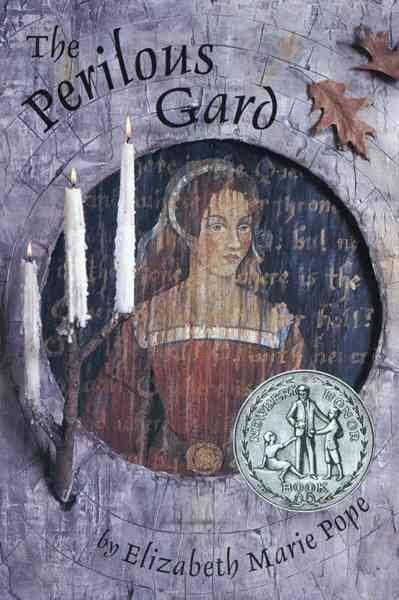8.8 /10 1 Votes8.8
4.9/5 Barnes & Noble Illustrator Richard Cuffari Language English Originally published 1974 Genre Young adult fiction | 4.1/5 Goodreads 4.1/5 AbeBooks Country United States Publication date 1974 Pages 288 pp ISBN 0618150730 Awards John Newbery Medal | |||||||||||||||||||||||||||||||||
 | ||||||||||||||||||||||||||||||||||
Similar John Newbery Medal winners, Fantasy books | ||||||||||||||||||||||||||||||||||
The Perilous Gard is an American young adult novel by Elizabeth Marie Pope, published in 1974. It was awarded the Newbery Honor in 1975.
Contents
Plot summary
The Perilous Gard takes place in England during the 1550s. The lead character, Kate Sutton, is a lady-in-waiting to Princess Elizabeth (the later Queen Elizabeth I of England). Her sister, Alicia, inadvertently gets her exiled to a castle named Elvenwood Hall, also known as the Perilous Gard, where she finds that the daughter of Sir Geoffrey Heron, the master of the hall, vanished under mysterious circumstances that implicate his brother, Christopher Heron. Kate soon discovers that, although the seeming death of little Cecily was an accident, Christopher is still so overwhelmed with grief that he has exiled himself from castle life. When Kate learns of the local villagers' fears that the "Fairy Folk" will kidnap their children, she guesses that Cecily might not be dead after all. She tells Christopher of her suspicions, and he, unbeknownst to Kate, comes up with a desperate plan to save Cecily. Meanwhile, Kate stumbles into the underground world of the Fairy Folk, who intend to use Christopher's desperation to their own advantage. The Fairy Folk are ruled by the Lady in Green, who believes that only a sacrifice can help her people hold their own against the advancing modern world.
Kate detests the Lady in Green at first, but the two of them have much in common. Both are strong-willed, highly independent, and capable of enormous self-discipline. Kate's refusal to be drugged or manipulated in other ways soon gains her a measure of respect among the Fairy Folk. Little by little she gains knowledge of their underground kingdom, while her view of the Lady in Green gradually changes. Kate begins to understand and even to respect the Lady in Green. In the end, however, Kate chooses to leave the Fairy Folk in order to save Christopher, destroying the fairy kingdom in the process. Christopher then takes Cecily to London to live with his sister Jennifer. When Christopher returns he proposes to Kate, and she accepts. Kate is granted freedom when Queen Elizabeth I ascends the throne.
Characters
Themes
The story is structured around the ballad of Tam Lin. The sacrifice of the "teind," or "tenth," which plays a major role in the novel as well as the ballad, is based on Scottish fairy lore. According to these legends, the fairies live beneath mounds or barrows under the earth. Since Hades was considered to be a place beneath the ground by many early Christians--Hippolytus, for instance, called it "a locality beneath the earth, in which the light of the world does not shine"—many Scottish ballads considered the fairies to essentially be vassals of Satan. As such, they had to periodically pay the devil for their use of the land. Paying at the correct time of year was considered essential. Since half-yearly rents in Scotland were due on All Saints' Day, or "Hallowmas," local laws may have contributed to this tradition. In the novel, however, the Fairy Folk believe they are offering the teind to their gods.
The Perilous Gard also contains references to the Thomas the Rhymer ballad and to the Arthurian legends, as well. Kate initially dislikes British folklore because she believes that it is unrealistic. As the story unfolds, however, she finds that the folklore she once despised is based on fact, and that understanding it may allow her to save Christopher from the Fairy Queen.
Author J.B. Cheaney, in her review of the book, notes that it presents a nuanced view of the conflict between paganism and Christianity. The pagans are scrupulously honest, avoiding some of the pretentiousness of Christian Elizabethan society. At the same time, theirs is a "nature-worship paired with blood sacrifice, mindless ecstasy marred by fear, a relentless eye-for-eye accounting system that left no room for compassion." Kate ultimately decides to leave the Fairy Folk because she considers their society cruel and their religious beliefs wrong. She continues to respect them, however, and in some ways she misses their simple lifestyle.
Publication history
The Perilous Gard was first released in 1974 by Houghton Mifflin Harcourt. It was reprinted in 2001, and RecordedBooks produced an audiobook version that same year. The audiobook is narrated by Jill Tanner.
